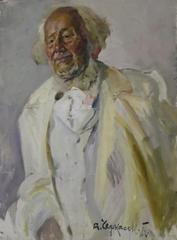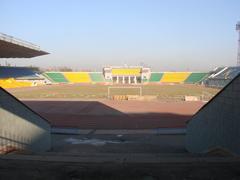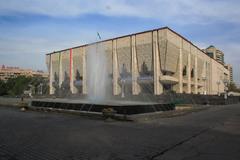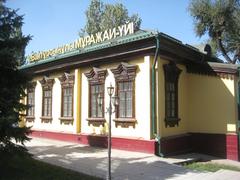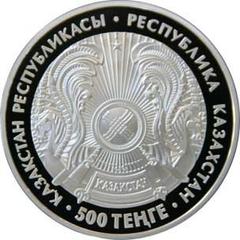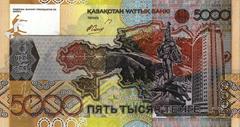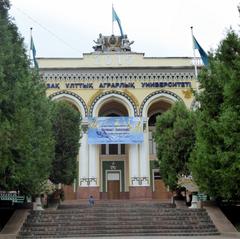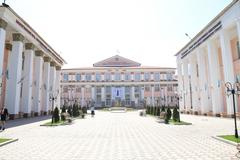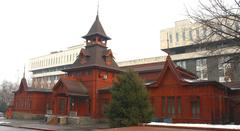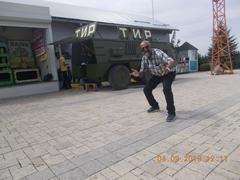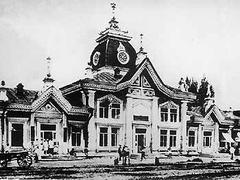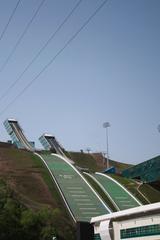Zhibek Zholy, Almaty: Visiting Hours, Tickets, and Guide to the Historic Arbat Street
Date: 04/07/2025
Introduction
Zhibek Zholy—meaning “Silk Road” in Kazakh and often called Almaty’s Arbat Street—is a vibrant pedestrian boulevard central to Almaty’s historical and cultural landscape. Tracing its origins to Almaty’s role as a Silk Road hub, Zhibek Zholy has evolved into an urban artery where history, commerce, art, and community life interweave. Stretching through the heart of the city, this pedestrian street offers a seamless blend of architectural heritage, contemporary retail, street art, and culinary delights, making it a must-visit for locals and travelers alike. Whether you’re seeking cultural immersion, shopping experiences, or a leisurely stroll, this guide provides detailed insight into visiting hours, ticketing, accessibility, top attractions, and expert tips for an enriching visit (Caravanistan, Visit Almaty, Kalpak Travel).
Contents
- Historical Evolution of Zhibek Zholy
- Cultural Significance and Highlights
- Practical Visitor Information
- Shopping, Dining, and Entertainment
- Top Nearby Attractions
- Frequently Asked Questions (FAQ)
- Final Recommendations
- References
Historical Evolution of Zhibek Zholy
Silk Road Beginnings
Zhibek Zholy’s name pays homage to the Silk Road, the famed trade route that linked East and West for centuries. Almaty’s advantageous location near the Zailiysky Alatau mountains made it a natural crossroads for traders and travelers from the 10th century onwards (Caravanistan). The area surrounding Zhibek Zholy has always been a hub of commerce, a tradition kept alive today by the nearby Green Bazaar (Adventure Backpack).
Soviet and Modern Transformations
Under Russian imperial and later Soviet rule, Almaty (then Verniy) experienced significant urban development, including the creation of grid-patterned streets and monumental architecture. Zhibek Zholy reflects this blend of Soviet-era design and local heritage. Post-independence, the street underwent extensive pedestrianization and revitalization, transforming into a dynamic public space celebrated for both its historical roots and its role in modern urban life (Visit Almaty).
Cultural Significance and Highlights
Creative Hub and Urban Identity
As the city’s first major pedestrian street, Zhibek Zholy serves as a vibrant platform for artists, musicians, and artisans. Regular open-air exhibitions, cultural fairs, and street performances animate the boulevard, while its proximity to landmarks like the Kazakh State Academic Opera and Ballet Theater cements its status as Almaty’s cultural heart (Visit Almaty).
Multiculturalism
Zhibek Zholy exemplifies Almaty’s multicultural character, blending Asian and European influences in its architecture, public art, and street life. During festivals such as Nauryz and Almaty City Day, the street transforms into a lively stage for celebrating Kazakh heritage and fostering community spirit (Adventure Backpack).
Artistic and Architectural Features
The boulevard is adorned with sculptures and art installations that narrate Kazakhstan’s history. Notably, the Zhibek Zholy Metro Station is decorated with ceramic bas-reliefs depicting Silk Road scenes (Walking Almaty). The mix of Soviet and contemporary architecture enhances the dynamic urban landscape.
Practical Visitor Information
Visiting Hours and Accessibility
- Street Access: Zhibek Zholy is open 24/7 as a public pedestrian zone.
- Shops and Cafes: Typically operate from 10:00 AM to 10:00 PM; hours may vary by season and business.
- Accessibility: The boulevard is fully wheelchair accessible, with smooth walkways, benches, and shaded areas.
Getting There
- Location: Centrally located, spanning from Central Park to Masanchi Street and intersecting major avenues (Wikipedia).
- Public Transport: Easily accessible via Zhibek Zholy Metro Station (with Silk Road-themed décor), numerous bus and trolleybus routes, and taxi services (Kalpak Travel).
- By Car: Paid parking lots are available near Central Park and major intersections.
Tickets and Guided Tours
- Access: No entrance fee for the street itself.
- Attractions: Some nearby museums and theaters (e.g., Kazakh State Academic Opera & Ballet Theater, Museum of Folk Musical Instruments) require tickets, available on-site or online.
- Guided Tours: Walking tours are available via local agencies; prices typically range from 2,000–4,000 KZT ($5–$10 USD). Advance booking is recommended.
Shopping, Dining, and Entertainment
Shopping
- International Brands & Local Boutiques: Find Mango, Zara, and unique Kazakh boutiques offering handicrafts and souvenirs (WeLoveAlmaty).
- TSUM Department Store: Multi-level shopping with both modern retail and traditional crafts.
Dining
- Restaurants & Cafés: Options range from upscale international cuisine to traditional Kazakh dishes like beshbarmak and shashlik. Many offer outdoor seating.
- Street Food: Vendors sell affordable local snacks—samsa, shashlik, and fresh fruit.
Entertainment
- Street Performers & Artists: Live music, portrait artists, and flash mobs are common, especially during festivals.
- Public Art & Installations: Experience regularly updated sculptures and fountains that enhance the street’s character.
Top Nearby Attractions
- Green Bazaar: Bustling market for fresh produce and crafts.
- Panfilov Park: Lush park with monuments and the Ascension Cathedral.
- Kazakh State Academic Opera & Ballet Theater: For live performances.
- Museum of Folk Musical Instruments: Showcasing Kazakh musical heritage.
- Zenkov Cathedral: Iconic Russian Orthodox church nearby.
Frequently Asked Questions (FAQ)
Q: What are the visiting hours for Zhibek Zholy?
A: The street is open 24/7. Shops and events generally run from 10:00 AM to 10:00 PM.
Q: Are tickets required for entry?
A: No, the street is free to access. Tickets may be needed for museums, theaters, or guided tours.
Q: Is Zhibek Zholy accessible for wheelchairs and strollers?
A: Yes, the boulevard is flat and well-paved with accessible amenities.
Q: How do I get to Zhibek Zholy from the airport?
A: Take a taxi or use the metro and bus system to reach the city center (Holidify).
Q: Is it safe to visit?
A: The area is well-lit, patrolled, and family-friendly. Standard city precautions apply.
Q: Are guided or virtual tours available?
A: Yes, local agencies offer guided tours, and some official tourism platforms provide virtual experiences.
Final Recommendations
Zhibek Zholy is more than a pedestrian street—it’s a living chronicle of Almaty’s journey from a Silk Road crossroads to a thriving modern metropolis. Its seamless fusion of history, culture, architecture, and community events provides a truly multifaceted experience for visitors of all interests. Enjoy free access to the bustling pedestrian zone, explore diverse shops, sample local cuisine, and soak up the city’s creative energy. Enhance your visit by exploring nearby attractions, joining a guided tour, or participating in seasonal festivals like ArbatFest and Nauryz.
For the latest updates on events, guided tours, and practical tips, download the Audiala app and follow Almaty’s cultural channels on social media.
Visuals and Interactive Elements
- Photos: Include high-resolution images of Zhibek Zholy’s street life, art installations, and festivals.
- Alt Tags: Examples: “Zhibek Zholy pedestrian street in Almaty,” “Art at Zhibek Zholy metro station,” “Almaty City Day celebration.”
- Interactive Map: Highlight the promenade and key nearby attractions.
- Virtual Tours: Check tourism websites for available options.
References
- Caravanistan
- Visit Almaty
- Kalpak Travel
- Wikipedia
- WeLoveAlmaty
- Holidify
- Burabai.kz
- Megan Starr
- WanderOn
- Wanderlog
- MakeMyTrip
- Welcome.kz
- Walking Almaty
- Adventure Backpack
Explore Zhibek Zholy to experience the unique convergence of history, culture, and urban vibrancy at the heart of Almaty. For more information, download the Audiala app for offline maps and guided audio tours.
